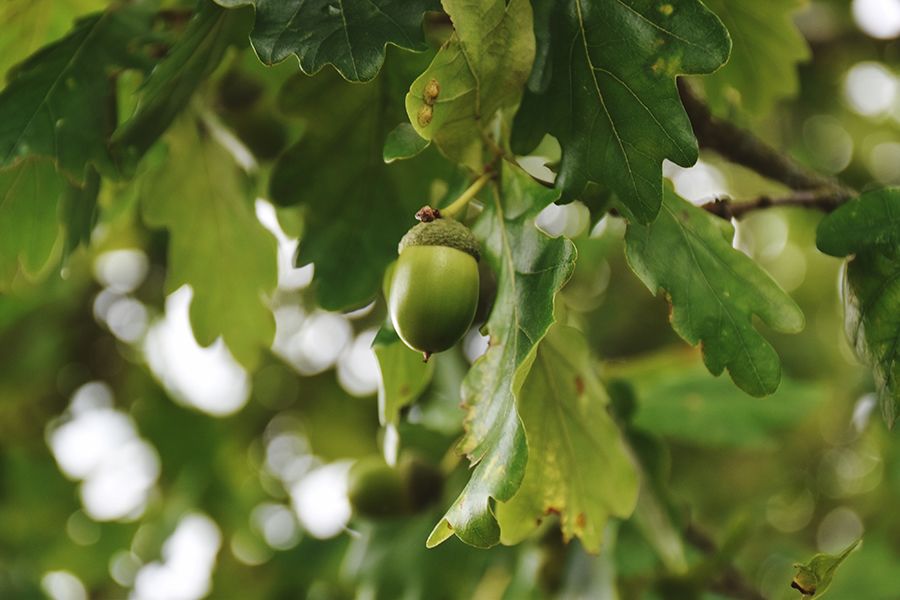Predicting threats to food security
How mathematical modelling can prevent crop devastation and preserve livelihoods.

Impact at a glance:
- Forecasting wheat rust disease to enable up to 500,000 smallholder farmers in Ethiopia to take timely preventative action.
- Predicting the spread of, and control options for, cassava brown streak disease in ten countries in Sub-Saharan Africa, leading to governmental policy changes.
- Informing strategy for the control of banana bunchy top virus for the Australian banana industry, worth AUS $605m to the country’s economy.
- Informing surveillance and management of tree diseases, ash dieback, ramorum disease of larch and oak processionary moth in the UK, and citrus greening in California, US.
“Pests and diseases remain one of the biggest threats to food production, increasingly destabilising food security and livelihoods across climate-vulnerable regions around the world,” says Professor Chris Gilligan, Director of Research in the Department of Plant Sciences, University of Cambridge.
“While farmers in these countries are struggling to control familiar pests and pathogens that are endemic, new pests and pathogens are appearing for the first time. Until now, these newly emerging threats have not been possible to predict.”
So, what has changed? The answer lies, in thinking big.
“In the past there’s been a tendency to focus on an individual crop when controlling a particular disease using genetic resistance or fungicides.” But, as Gilligan explains, when it comes to diseases that have no regard for boundaries and borders, that is not enough.
“Some diseases can spread very rapidly – these are known as transboundary pests and pathogens – in the context of the African continent you could have a disease that spreads through many countries in Sub-Saharan Africa within days or weeks.”
“As epidemiologists we realised that what your neighbour does, and their neighbour does and so on, really matters. We needed to think on a bigger scale.”
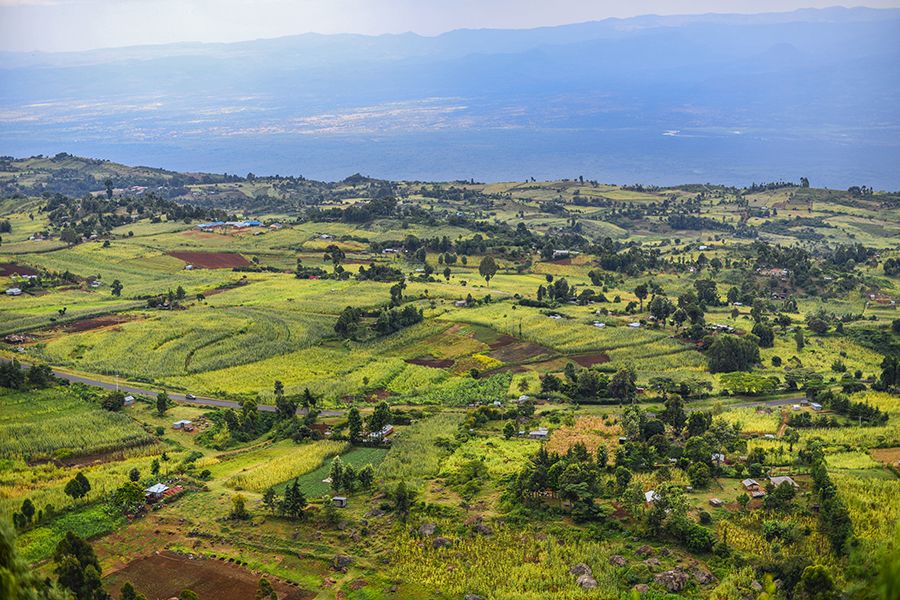
Landscape view from Kenya’s Kerio Escarpment of farmland, with the Great Rift Valley beyond. Credit: Jennifer Watson / iStock / Getty Images Plus via Getty Images
Landscape view from Kenya’s Kerio Escarpment of farmland, with the Great Rift Valley beyond. Credit: Jennifer Watson / iStock / Getty Images Plus via Getty Images
Multiple factors determine the spread of a disease: the crops themselves and how they are distributed across the landscape; the environment, which is now further complicated by climate change; the pathogens and their propensity to multiply and spread, and finally, there’s the influence of farmers’ behaviour in controlling disease.
Gilligan realised that what was needed was an “epidemiological toolkit” that could account for all the varying factors. The resource built with his team of modellers, biologists and computer scientists in the Department of Plant Sciences not only enables the tracking of diseases in real-time, it also predicts how an outbreak will unfold and how cost-effective interventions are for halting its spread.
The idea is to pull the epidemic below a threshold of prevalence in a landscape so that it fades out, explains Gilligan.
Key to the success of the models is collaboration with in-country partners. “We meet with agricultural extension workers and research scientists in Sub-Saharan Africa and South Asia to discuss what is feasible. Our aim is always to provide practical guidance in managing disease.
“Yes, models can be interesting for academic reasons, but we want to help people on the ground. When a grower in Kenya says, “I don’t want to know what it is; I want to know what to do about it,” that’s very telling.”
The modelling technology that Gilligan and his team have developed has been used by governments across the world and is helping to preserve livelihoods.
Forecasting wheat rust disease in Ethiopia

“Ethiopia is the largest wheat producer in Sub-Saharan Africa providing a source of food and income for an estimated five million farming households,” says Gilligan. It’s also vital to the economy. This means that diseases affecting wheat production can have devastating consequences.
One of the deadliest is a fungal disease called wheat rust that can result in “explosive epidemics” due to rapid wind dispersal. Gilligan explains that in the past there have been severe epidemics with fungicide being applied “too late or in the wrong place at the wrong time” resulting in a “double failure” with crops lost and foreign currency spent on fungicide.
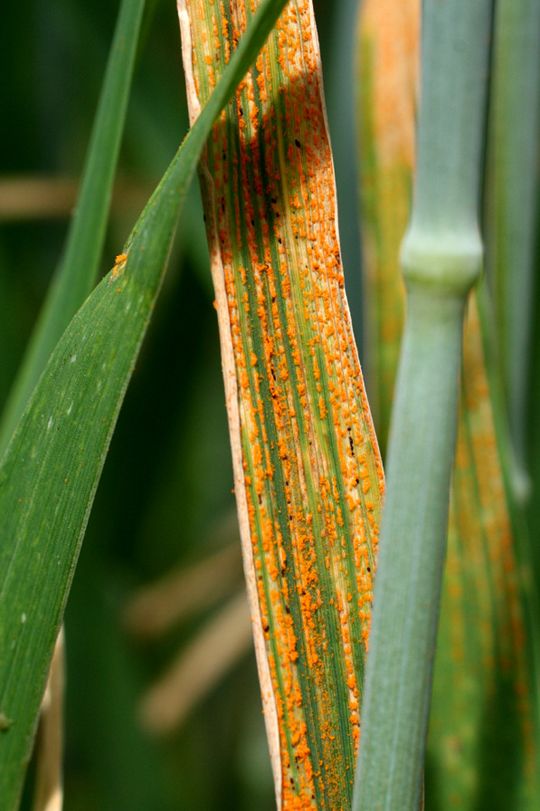
Yellow Rust
Yellow Rust
Gilligan and his team adapted their epidemiological toolkit to predict the timing and dispersal range of wheat rust spores, based upon weather forecasts generated by the UK Met Office. This allowed for an early warning system (EWS) in Ethiopia, forecasting up to seven days in advance.
They worked in partnership with the Ethiopian Agricultural Transformation Agency, the Ethiopian Institute of Agricultural Research, the International Maize and Wheat Improvement Centre (CIMMYT), and the UK Met Office to deploy the EWS.
This allowed policymakers to make timely and informed decisions about the allocation of limited stocks of fungicide. To date, it is estimated that the models to forecast wheat rust disease have enabled up to 500,000 smallholder farmers in a region of Ethiopia to take timely action reducing risks to food supplies.
In 2021 all conditions were favourable for an epidemic of a new strain of wheat rust – meaning there was no natural resistance making chemical control the only option. Thanks to the EWS, fungicides were used effectively and the epidemic prevented.
Since the application of the wheat rust EWS in Ethiopia, the forecasting service has been expanded across Bangladesh, Nepal and Kenya.
Tackling cross-continental spread of cassava brown streak disease
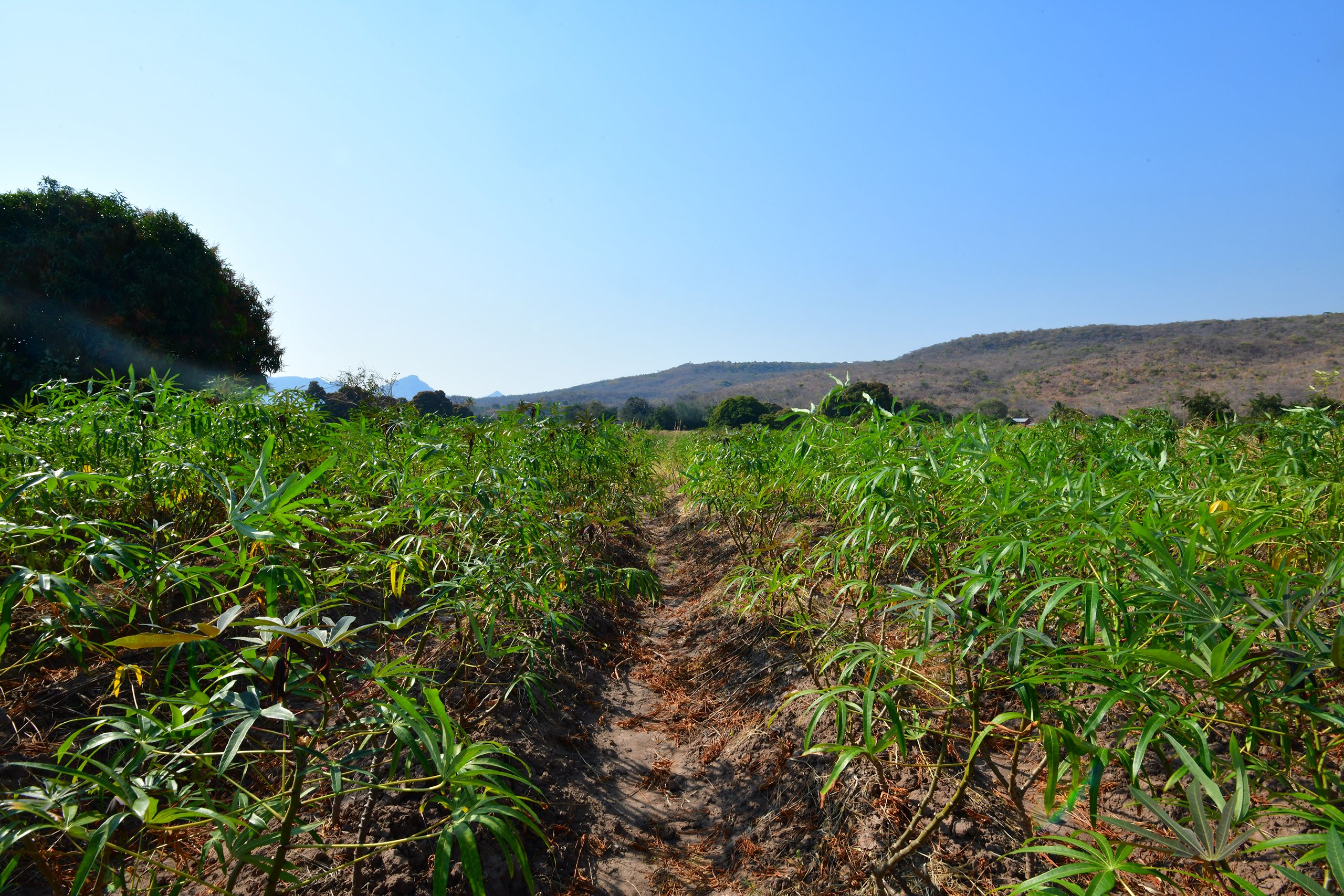
“A new disease that has spread across East and Central Africa and caused major problems is Cassava Brown Streak Disease (CBSD),” says Gilligan. “There are options for managing the virus, but you must spot it early.”
CBSD can reduce yields of cassava by up to 50-100%* which is disastrous for the estimated 500 million people across Sub-Saharan Africa who rely on it as their staple food crop. CBSD is one of the diseases that the West African Virus Epidemiology (WAVE) programme seeks to control.
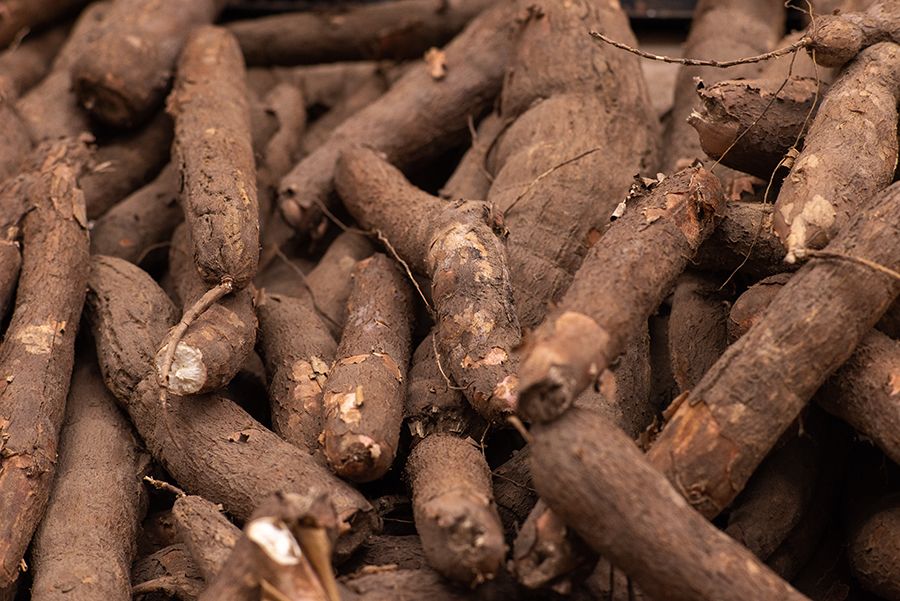
Cassava. Credit: Helder Faria / Moment via Getty Images
Cassava. Credit: Helder Faria / Moment via Getty Images
The WAVE programme was established with funding from the Bill and Melinda Gates Foundation and the UK’s Foreign, Commonwealth and Development Office in partnership with Gilligan’s Group. The aim of the consortium is to increase food production in Central and West Africa, by developing effective methods for the control and management of transboundary plant pathogens, as well as preventing the incursion of exotic plant diseases into new areas.
As part of the initiative, in 2018-19 Gilligan’s Group predicted the spread of CBSV through Central Africa, successfully identifying the location and timing of invasion into Zambia and the Democratic Republic of Congo. Through WAVE, Gilligan and his team worked with countries to advise on the rate which CBSV is spreading and options for containment.
“The African continent is leading the way internationally in forecasting,” says Gilligan. “As part of WAVE currently 10 – soon to be 14 – countries are working together to develop long-term strategies to prepare for, and respond to, this disease.”
*(UN FAO, Food Chain Crisis Early Warning Bulletin, 2018).
[Professor Gilligan has been] “instrumental in informing governments of the risks and in instituting surveillance programmes for early warning of the arrival of the pathogen…[and] undoubtedly influential in focussing governments to develop an integrated programme for surveillance, preparedness and response to the disease. This has influenced policies in all ten countries and would not have been possible without the scientific work of the Cambridge team.”
Executive Director, WAVE
“Predictions and models [from] the Cambridge team…have been instrumental tools in…mobilising ministers…to support an integrated program. The models are integral to screening strategies for management of the disease.”
Senior Program Officer for Agricultural Development, BGMF
Informing surveillance and management strategies of UK woodland

Gilligan's epidemiological toolkit has been making an impact all over the world – from addressing banana bunchy top virus in Queensland, Australia, to managing citrus greening disease in California, USA. It’s also been used to protect woodlands in the UK.
Gilligan and his team provided the UK government with advice on tackling diseases and pests that were affecting woodlands. These included Ash Dieback, Ramorum disease and Oak Processionary Moth. They worked with the Forestry Commission to model outbreaks, identify causes of transmission and advise on best practice for managing invasions.
[Gilligan’s Group] “made a vital contribution to supporting plant health in the UK between 2013 and 2020” [and has] “enabled Defra to lead the way in the use of epidemiological models and predictions to communicate risk and compare strategies for management of tree disease with stakeholders”
Chief Plant Health Officer, Defra
Saving woodlands
Dieback disease of ash (Hymenoscyphus fraxineus)
There are approximately 185 million ash trees in the UK, fulfilling important roles in supporting biodiversity and ecological functions, which no single alternative UK native tree species can provide.
The Department for Environment, Food and Rural Affairs (Defra) estimates the social and environmental value of ash at over £230m per year, and The Woodland Trust estimates that dieback will kill around 80% of ash trees across the UK without intervention.
Gilligan’s Group successfully demonstrated that, contrary to current opinion, importation of infected trees for planting was not the only source of infection, with long distance aerial dispersal of spores also being important. Their models were used to inform ministerial decisions on strategies such as the imposition of an import ban for the management of the disease.
Ramorum disease of larch (Phytophthora ramorum)
This disease was first identified in UK trees in 2010. Defra was required to provide advice to landowners on management involving the removal of infected and surrounding Japanese larch trees, widely grown in the UK.
Gilligan’s models were used to provide optimal guidance for the extent of these removals, many of which were required by law. The models have been central in a programme from 2014 onwards.
Oak Processionary Moth
This pest of oak trees, accidentally introduced to England in 2005, also causes a harmful rash in humans; it is established in most of Greater London and in some surrounding counties.
Gilligan’s Group provided the Forestry Commission with a set of surveillance plans based upon estimates from epidemiological models for the spread of the pest. These have improved the effectiveness of surveillance in three successive years (2017-2020) and the identification of caterpillar nests for removal.
Returning to roots

Gilligan’s recent work on protecting UK woodlands has returned him to his roots; he studied Agricultural and Forest Sciences as an undergraduate at Oxford. He explains that he has always been interested in integrating information – epidemiology, ecology, mathematics and economics.
While at Cambridge, Gilligan taught himself statistics and maths. This freedom to follow his interests played a fundamental role in laying the foundations for the cross-disciplinary approach to plant disease that he would later develop. Ultimately it would lead to his epidemiological toolkit that has undoubtedly saved livelihoods.
“I’m thankful for the freedom Cambridge has given me to pursue new areas of knowledge and reinvent myself. This has been a privilege.”
Epidemiology and Modelling, Department of Plant Sciences, University of Cambridge
Published 22 February 2023
With thanks to:
Professor Chris Gilligan, Professor of Mathematical Biology, Head of Group
Dr Alison Scott-Brown, Research Impact Manager
Words:
Charis Goodyear
The text in this work is licensed under a Creative Commons Attribution 4.0 International License



